Strength training for tennis players: Tips from Tennis Director René Heger
September 26th, 2023 | 4 min. read
By Jen Azevedo
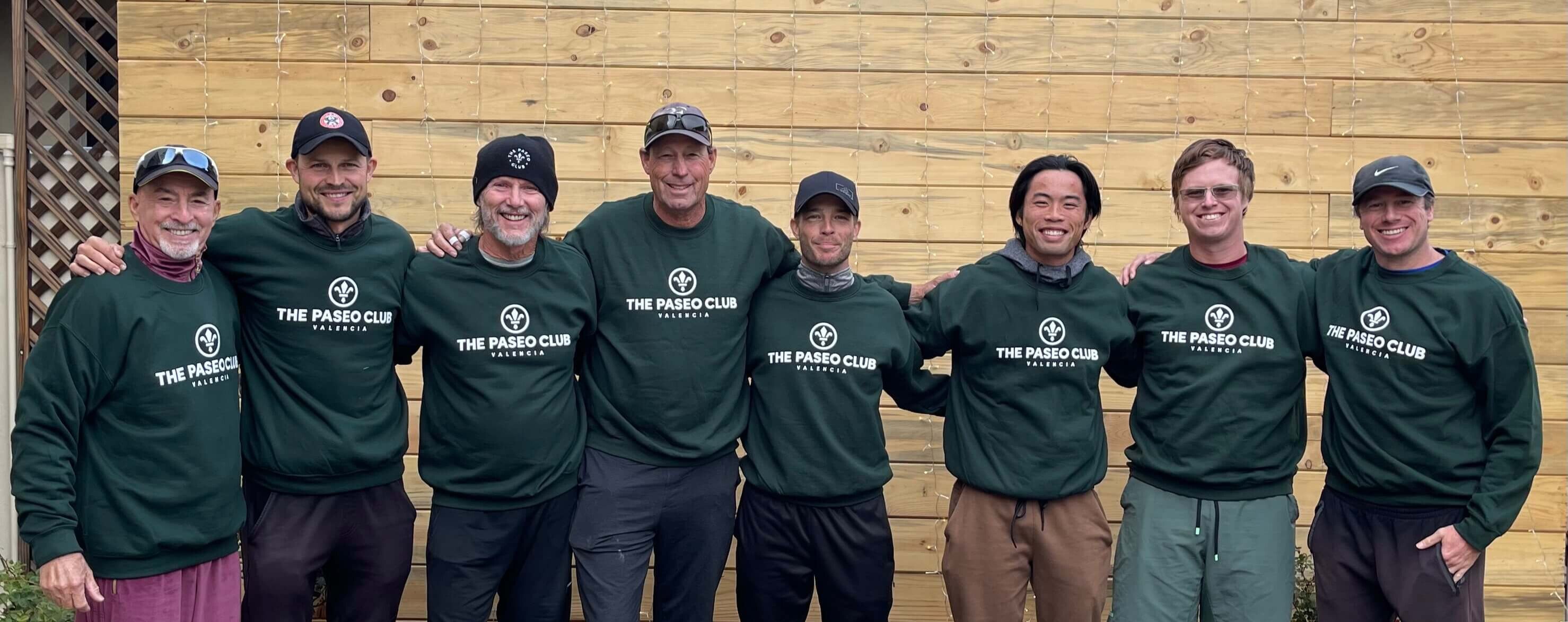
According to the National Institute of Health, tennis players' athletic ability depends on their physical fitness. Whether it is quick sprints across the court, a powerful groundstroke, or maintaining energy during long matches, tennis players need a lot of strength and endurance to be skilled athletes.
Most tennis players train by playing more games — maybe attending a drill or clinic on an occasion. This method helps to a point. But is that the approach that will help you realize your full potential?
Cross-training tennis with strength training, specifically plyometrics, can make you stronger, more powerful, and explosive — becoming a more formidable opponent on the courts.
The Paseo Club is a social club in the Santa Clarita Valley with 12 tennis courts and offers drills, leagues, and tournaments.
In this article, you will learn what the Paseo Club Tennis Director/USPTA Pro René Heger has to say about how to strength train as a tennis player, what types of training are best, how to minimize injury, and why mobility work is still necessary.
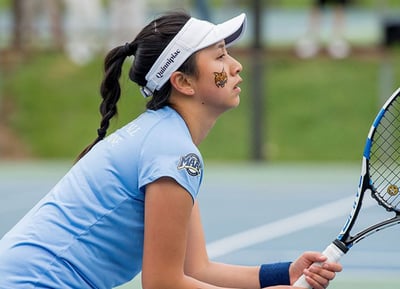 Why do tennis players need to strength train?
Why do tennis players need to strength train?
Tennis players do require strength training, but the movements must be designed specifically for players. Certain regions of the body benefit from strength training more than others. Tennis players should target these three areas:
Core
The core is essential for lower body strength, explosiveness, quick acceleration and deceleration — all key components for tennis. A well-developed core also helps you to improve hip rotation, range of motion in the shoulders, and back stability. A strong core leads to more powerful and more accurate shots and prevents injury.
Lower back
The lower back is one of the main areas where tennis players get injured. Doing movements that strengthen and mobilize the lower back and engage the core, pelvis, and hips protects your back from strain and overextension.
Quadriceps and Hamstrings
Quadriceps and hamstrings are responsible for the explosive power that tennis players use for sprints, lunges, and volleys. Calves absorb lots of shock and are also a muscle group to strengthen.
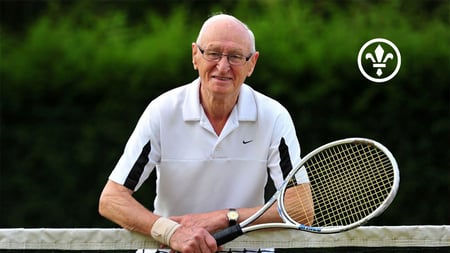 Does strength training improve a player's performance on the court?
Does strength training improve a player's performance on the court?
Absolutely!
Tennis relies on the expansion and fast contraction of muscles. Strength training is the key to activating fast twitch muscles, increasing flexibility, and having a consistent athletic performance.
Strength training also provides the stability and coordination necessary to craft longer points and put yourself into winning positions on the court more often. Research has shown that leg and back strength are directly linked to serve throwing speed and agility.
Does strength training help minimize the chance of injury?
Tennis players are prone to injuries to several areas of the body.
- Foot
- Wrist
- Elbow
- Forearm
- Shoulder
- Lower back
Tennis is a physically demanding sport, requiring a high level of conditioning to facilitate injury prevention. Strength training does help players have more resistance to stress and overuse injuries that lead to strains, sprains, and inflammation.
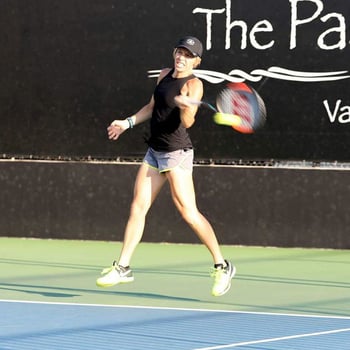 Does strength training replace mobility and stretching exercises?
Does strength training replace mobility and stretching exercises?
Absolutely not!
Strength training and mobility work go hand in hand. It is imperative that you warm up with a light jog to get the blood flowing and then transition into dynamic stretches.
NEVER stretch cold muscles. Players often walk onto the court — straight from their car — grab the racquet and begin to stretch on the way to the baseline. This practice is asking for injury. Always perform a warm-up jog followed by dynamic (moving) stretches to prepare for playing a game of tennis.
5 Top strength training exercises for tennis players
Plyometrics is any exercise where a muscle or muscle group reaches maximum force in a short period of time. It is a form of strength training that is particularly helpful for tennis players because it helps with acceleration, explosiveness, core strength, and lower body strength.
These five exercises are great foundational movements tennis players should do.
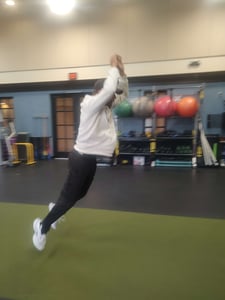 1. Frog jumps
1. Frog jumps
This explosive movement is great for quads, glutes, and hip flexors. Start this exercise by getting into a squat position with your hands in front of you, touching the ground. Jump upright so your arms are stretched above your head and your legs fully extended. Then land, returning into the squat position.
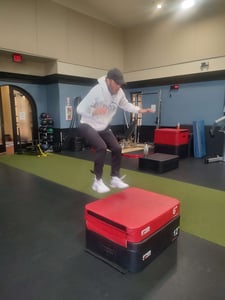 2. Box Jumps
2. Box Jumps
Box jumps have gotten a lot of press recently because of their popularity in the HIIT/CrossFit community.
Start the box jump from a standing position, bending into a slight squat, and then jumping onto a wooden or foam box. Lock your hips and knees to an upright position and then step down.
Box heights vary, so you can find the right one for your ability. This movement targets your quads, calves, hamstrings, and glutes.
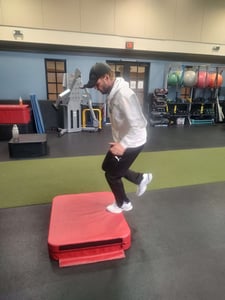 3. One-legged jumps
3. One-legged jumps
One-legged jumps are single-leg explosive jumps where you move upward as high as you come. You can do this movement from the ground. Or you can increase the degree of difficulty by putting one leg on the edge of a box or step-up platform. This movement helps you develop speed, strength, coordination, reactivity, and acceleration. It works the same muscles as box jumps but requires even more core stabilization.
4. Medicine ball drills
Medicine balls are weighted balls that can be used for a variety of movements — wall balls, cleans, crunches, rebounder throws, high knees while holding the ball, weighted ball slams, and more. Med balls are a piece of training equipment that can target all areas of the body without impact, giving the joints a rest.
5. Resistance band training
Resistance bands are a versatile tool for strength training and mobilization work. All the movements are low-impact, and the bands are small and compact — so you can bring them anywhere. You can exercise all areas of the body, and bands come in different levels of resistance.
This is a list of some of our favorite moments for tennis players. There are dozens more, including ones that utilize dumbbells and kettlebells.
.png?width=375&height=303&name=crop_comp_weights%20-%20Edited%20(2).png) What are the best strength training classes for tennis players at the Paseo Club?
What are the best strength training classes for tennis players at the Paseo Club?
Strength training classes allow for the balance and power to build while also pushing to expand endurance and stamina — so that the third set of singles will be a weapon for you instead of your opponent!
There are many great options for tennis players at the Paseo Club that can help to balance against the strain you put on your body.
- LIFT
- TRIBE HIIT
- TRX and Core
- HIIT 30 minutes
- Strictly Strength
- Trainer Workout
- Cardio Core Extreme
- Core Tone and Strength
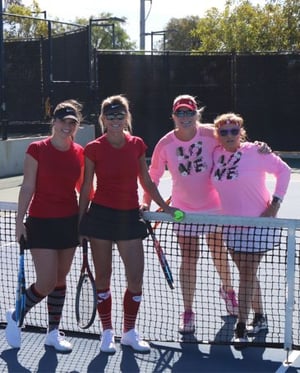 Improving your tennis game through strength training
Improving your tennis game through strength training
Tennis players need to strengthen their bodies in order to withstand the pressure of running, jumping, leaping, and swinging on the court. It will stave off injuries over time and improve your athletic performance.
The Paseo Club has many types of classes to meet your interests and busy schedule. Check out our yoga and Pilates classes to help you maintain flexibility and mobility. They are available to members of all different skill levels.
The Paseo Club offers over 60 fitness classes each week. There is also small group and private training for when you need personalized attention. Check out our junior Olympic pool, spa, and cafe for your post-workout recovery!
Are you not yet a member? Join the Paseo Club today. Enjoy all eight acres of our club and meet instructors and members.
Jen Azevedo is a tennis professional, pickleball professional, personal trainer, group exercise instructor, and the general manager of the Paseo Club. She loves the community at the Paseo Club and that it is also a safe and fun place for her daughter. Jen’s favorite activities are joining her tribe for trail races or her partners for tennis matches. Occasionally Jen slows down to relax with a book — she reads over 100 a year!

